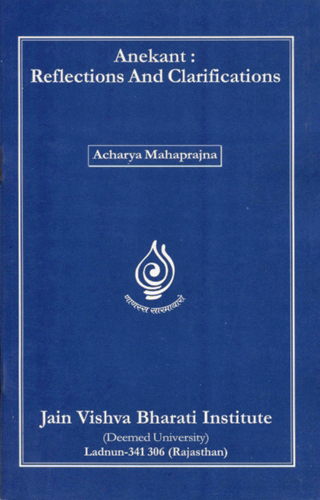Ācārya Mahāprajña
The canonical literature (āgamas) of the Jainas forms the basis of their philosophical thoughts. The word 'anekānta' does not appear in the agamas. The word was first used in the beginning of the age of philosophical writings. Probably, Siddhasena Divākara was the first to use it.
The basis of anekānta is naya. The Bhagavatī Sūtra deals with reality from the point of view of two nayas - the substantial (dravyārthika) and the modal (paryāyārthika). The two points of view (naya) are relative, according to Acharya Siddhasena. Their relativity is known as anekānta.[1]
The philosophical thoughts in India flow between absolute permanence and absolute transitoriness. The insentient element (prakṛti), according to Saṅkhya, is permanent-cum-transitory, butthe sentient element (puruṣa) is absolutely permanent, having no modifications. According to the Vaiśeṣika philosophy, the earth is permanent as cause and transitory as effect, but soul, God and space are without any modification. The reality is momentary, according to the Buddhists—whatever is real is momentary, just as the cloud. The concept of eternity is rejected outright in the Buddhist philosophy. In the Vedānta, Brahman is absolutely unchangeable and maya is changeable; Brahman, being beyond reality and unreality, is unspeakable.
What has been said above proves that the concept of 'only permanence' or 'only impermanence' is not of universal application, whereas anekānta covers the total reality and is, therefore, of universal application. Ācārya Hemchandra puts this universality in a poetic fashion—
ādīpamāvyomasamasvabhāvaṃ
syādvādmudrānatibhedi vastu
tannityamevaikamanityamanya-
dititvadājñādviṣtāṃ pralāpāḥ(anyayogavyavacchedikā, 5)
The reality, not going outside the realm of syādavāda is of the same nature, be it a lamp or the space. Some of those (philosophers) who do not obey your dictum O Lord! indiscretely declare reality to be absolutely permanent, whereas others declare it to be absolutely temporary.'
From the point of view of substance, reality neither originates nor perishes. From the point of view of mode, the mode originates and perishes. The BhagavatT Sutra speaks of two aspects of reality—the permanent and the temporary. The permanent part does not change, the temporary part undergoes change [2]—athire paloṭṭai, thire no paloṭṭai.
Umāsvāti defined reality as consisting of permanence, origination and destruction on the basis of the two view-points of substance and mode - utpādavyayadhrauvya-yuktaṃ sat ( Tattvārtha Sūtra, 5/29)
Reality has three characteristics. Therefore, it is anekāntika. One cannot comprehend its nature without anekānta. When it is said—'Reality is permanent', it is one view or aikāntika (one-sided). When it is said—'Reality is permanent-cum-temporary,' it is the anekānta view-point. What is peculiar or new about it is that it simultaneously accepts reality as possessed of both permanence as well as transitoriness.
 Acharya Mahaprajna
Acharya Mahaprajna
 Publisher:
Publisher: 